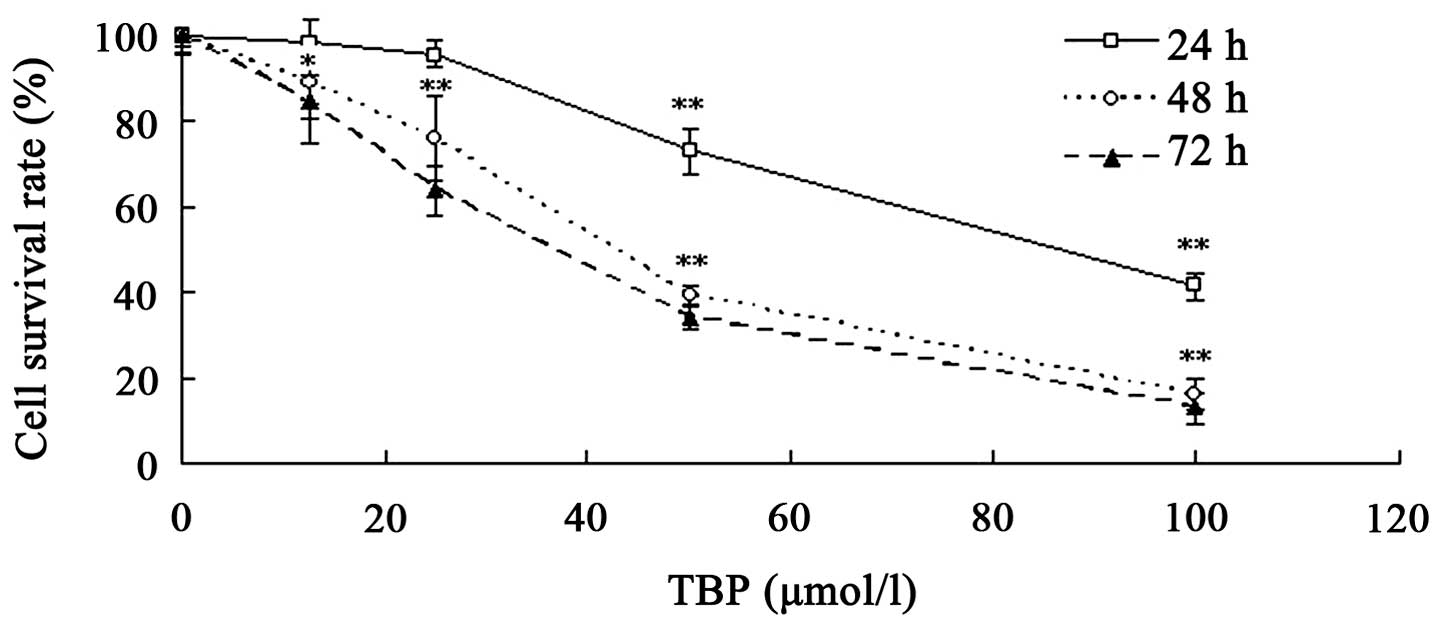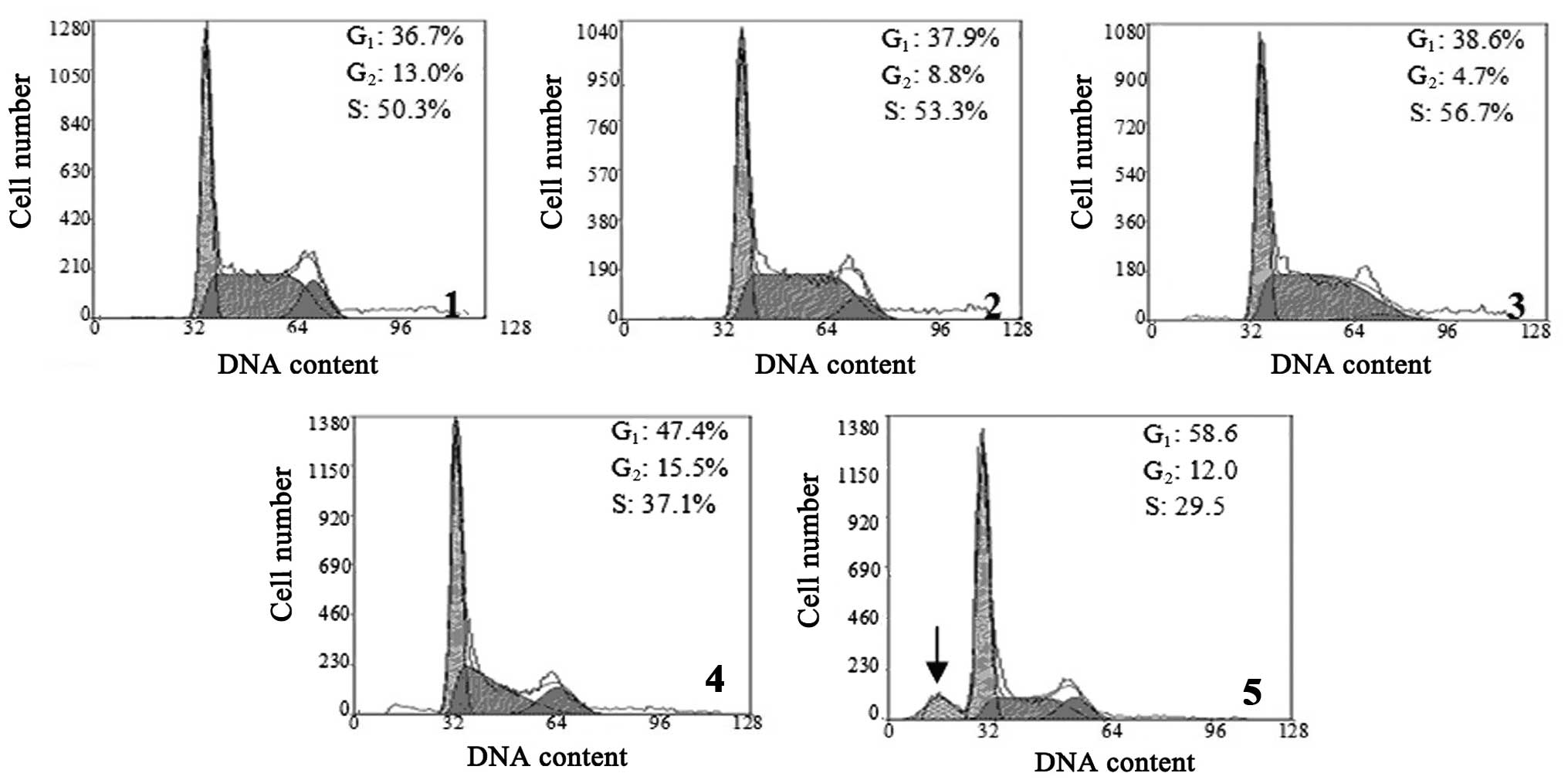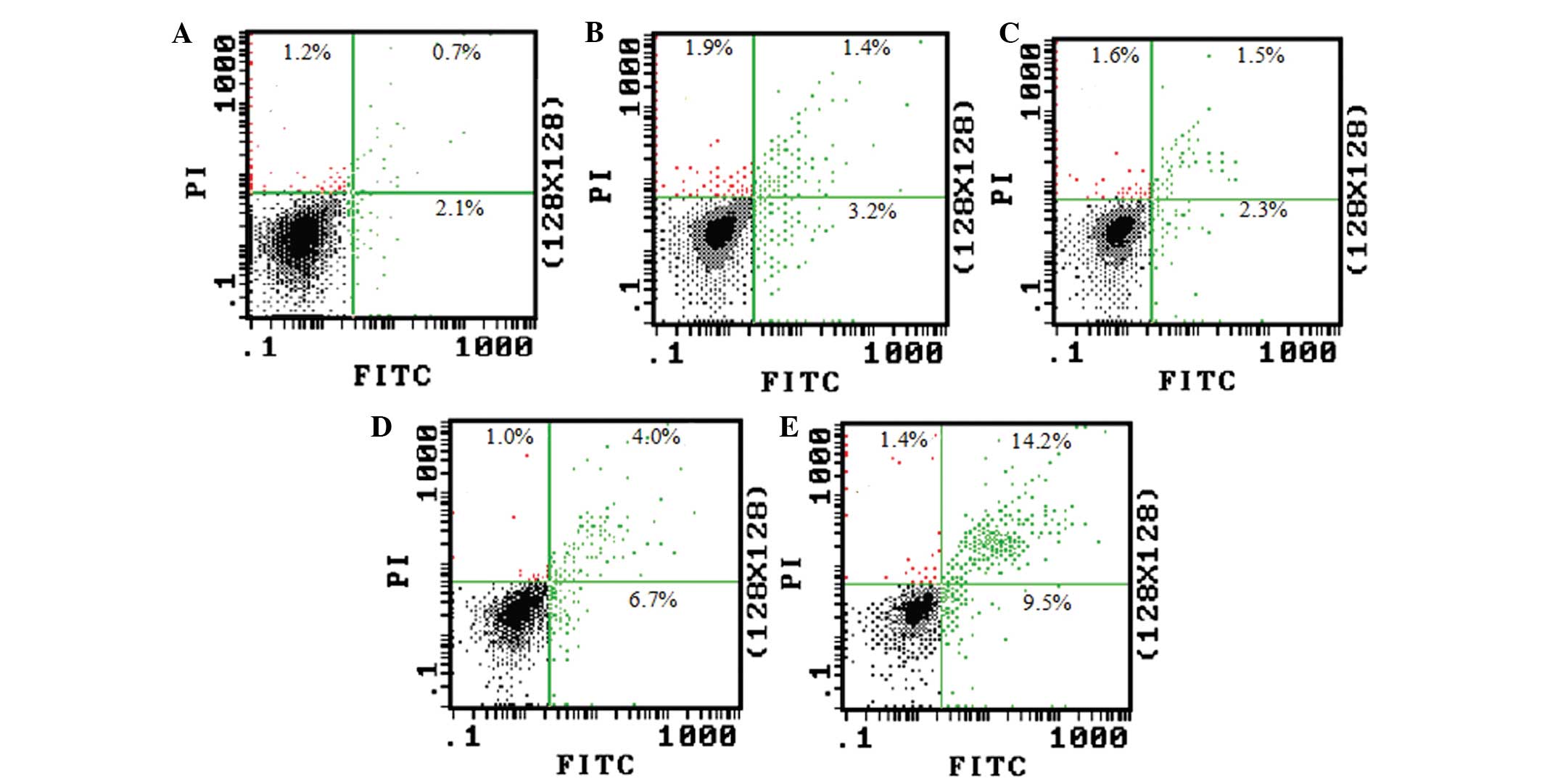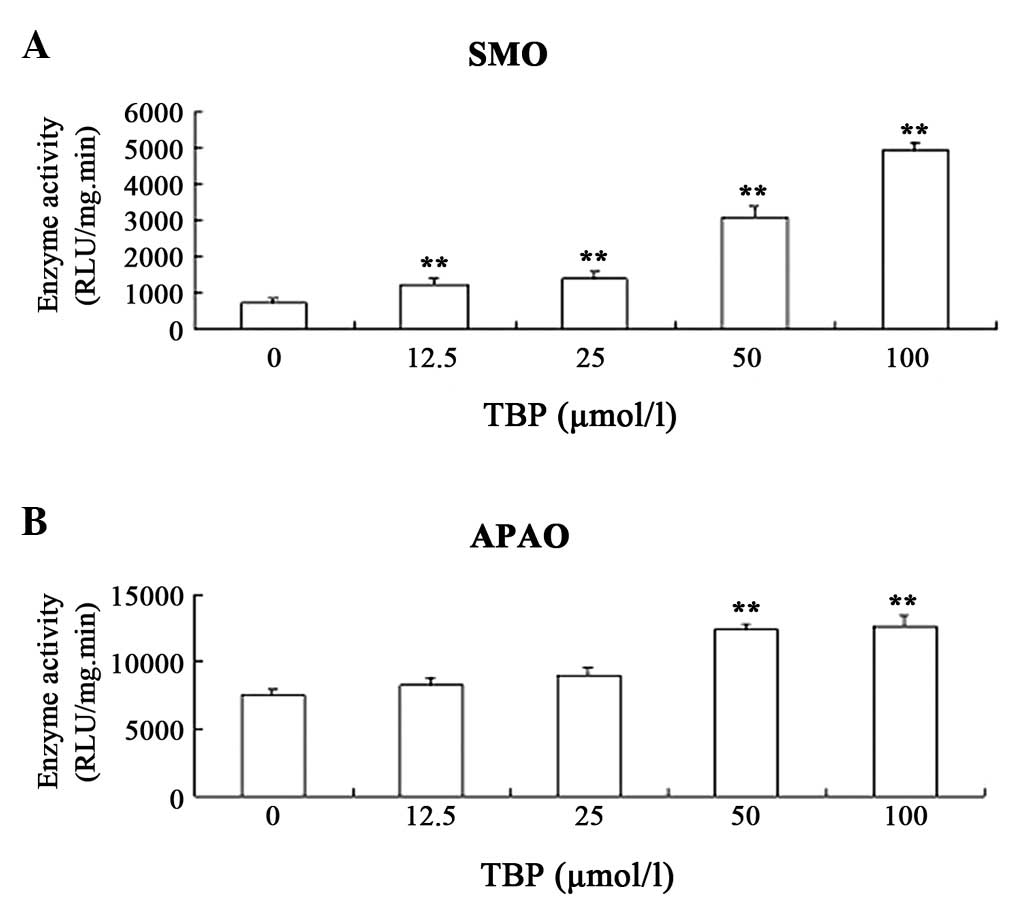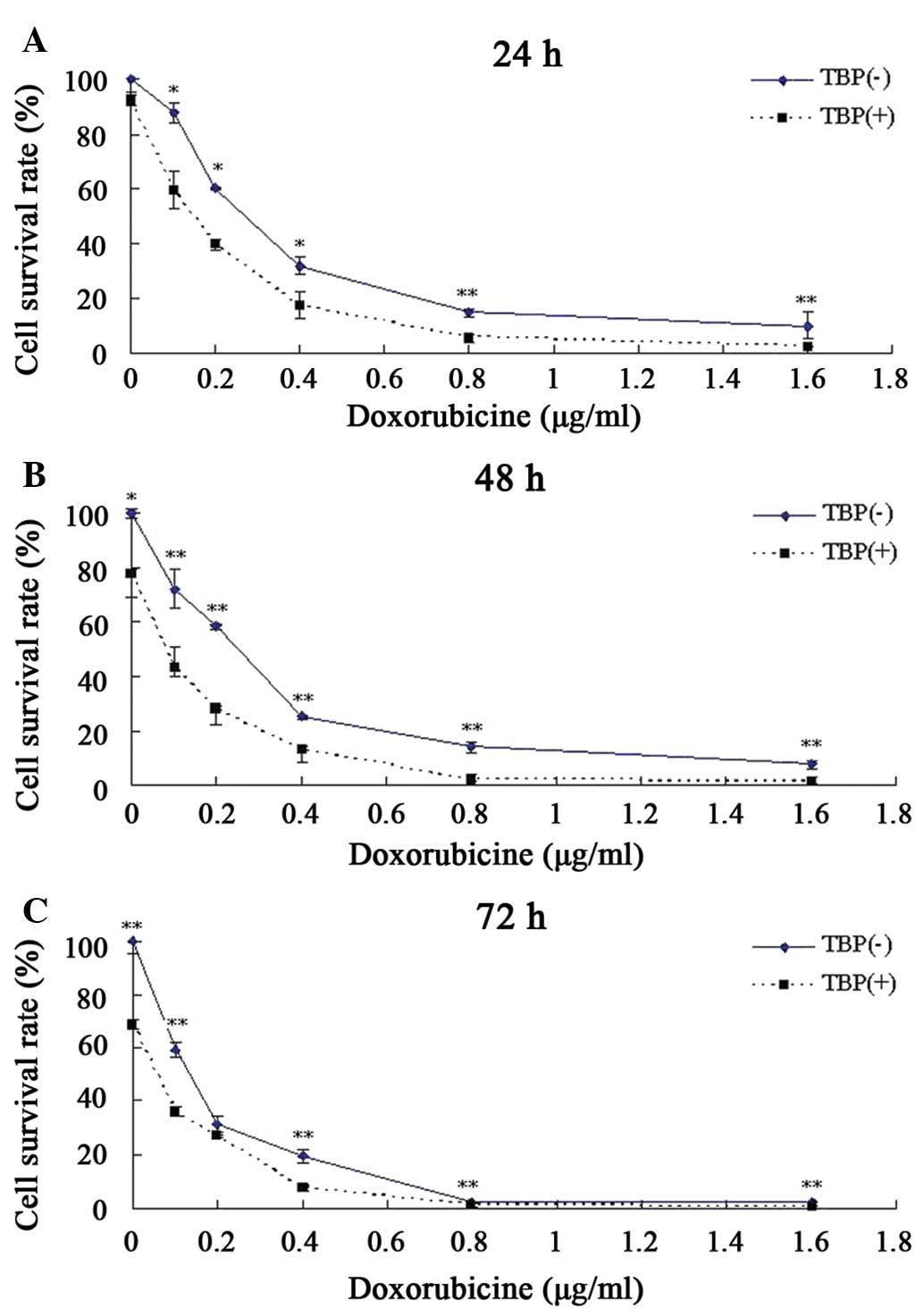|
1
|
Wang Y, Chen J, Wang L, et al:
Fangchinoline induces G0/G1 arrest by modulating the expression of
CDKN1A and CCND2 in K562 human chronic myelogenous leukemia cells.
Exp Ther Med. 5:1105–1112. 2013.PubMed/NCBI
|
|
2
|
Lee YL, Chen CW, Liu FH, et al:
Aclacinomycin A sensitizes K562 chronic myeloid leukemia cells to
imatinib through p38MAPK-mediated erythroid differentiation. PLoS
One. 8:e619392013. View Article : Google Scholar : PubMed/NCBI
|
|
3
|
Peng H, Yuan X, Shi R, et al: PHII-7
inhibits cell growth and induces apoptosis in leukemia cell line
K562 as well as its MDR-counterpart K562/A02 through producing
reactive oxygen species. Eur J Pharmacol. 2013.(In press).
View Article : Google Scholar
|
|
4
|
Shi R, Li W, Zhang X, et al: A novel
indirubin derivative PHII-7 potentiates adriamycin cytotoxicity via
inhibiting P-glycoprotein expression in human breast cancer
MCF-7/ADR cells. Eur J Pharmacol. 669:38–44. 2011. View Article : Google Scholar : PubMed/NCBI
|
|
5
|
Brusic A, Hainz U, Wadleigh M, et al:
Detecting T-cell reactivity to whole cell vaccines: Proof of
concept analysis of T-cell response to K562 cell antigens in CML
patients. Oncol Immunol. 1:1095–1103. 2012.
|
|
6
|
Broshtilova V, Lozanov V and Miteva L:
Polyamine metabolism changes in psoriasis. Indian J Dermatol.
8:306–309. 2013. View Article : Google Scholar
|
|
7
|
Soda K, Kano Y, Chiba F, et al: Increased
polyamine intake inhibits age-associated alteration in global DNA
methylation and 1,2-dimethylhydrazine-induced tumorigenesis. PLoS
One. 8:e643572013. View Article : Google Scholar : PubMed/NCBI
|
|
8
|
Soda K: The mechanisms by which polyamines
accelerate tumor spread. J Exp Clin Cancer Res. 30:95–103. 2011.
View Article : Google Scholar : PubMed/NCBI
|
|
9
|
Gamble LD, Hogarty MD, Liu X, et al:
Polyamine pathway inhibition as a novel therapeutic approach to
treating neuroblastoma. Front Oncol. 11:162–172. 2012.
|
|
10
|
Scuoppo C, Miething C, Lindqvist L, et al:
A tumour suppressor network relying on the polyamine-hypusine axis.
Nature. 487:244–248. 2012. View Article : Google Scholar : PubMed/NCBI
|
|
11
|
Yang JL, Han Y, Wang YL, et al: Polyamine
Analogues Tetrabutyl Propanediamine Inhibits Proliferation,
Invasion and Migration of Human Liver Cell Line HepG2 Cells in
vitro. Chin J Lab Diagn. 16:1350–1354. 2012.
|
|
12
|
Zhang HJ, Wang K, Wang YL, et al: Effects
of polyamine analogues tetrabutyl propanediamine on proliferation,
apoptosis and migration of human MG63 myeloma cells. Chinese
Pharmacological Bulletin. 28:974–977. 2012.
|
|
13
|
Wang Y, Hacher A, Casero RA, et al: The
induction of human spermine oxidase PAOh1/SMO is regulated at the
level of increased new mRNA, mRNA stabilization, and newly synthe
sized protein. Biochem J. 386:543–547. 2005. View Article : Google Scholar :
|
|
14
|
Wang Y, Murray-Stewart T, Casero RA Jr, et
al: Properties of purified recombinant human polyamine oxidase,
PAOh1/SMO. Biochem Biophys Res Commun. 304:605–611. 2003.
View Article : Google Scholar : PubMed/NCBI
|
|
15
|
Tyleckova J, Hrabakova R, Mairychova K, et
al: Cancer cell response to anthracyclines effects: mysteries of
the hidden proteins associated with these drugs. Int J Mol Sci.
13:15536–15564. 2012. View Article : Google Scholar
|
|
16
|
Xin H, Kong Y, Jiang X, et al:
Multi-drug-resistant cells enriched from chronic myeloid leukemia
cells by doxorubicin possess tumor-initiating-cell properties. J
Pharmacol Sci. 122:299–304. 2013. View Article : Google Scholar : PubMed/NCBI
|
|
17
|
Wang Y, Devereux W, Casero RA Jr, et al:
Cloning and characterization of a human polyamine oxidase that is
inducible by polyamine analogue exposure. Cancer Res. 61:5370–5373.
2001.PubMed/NCBI
|



